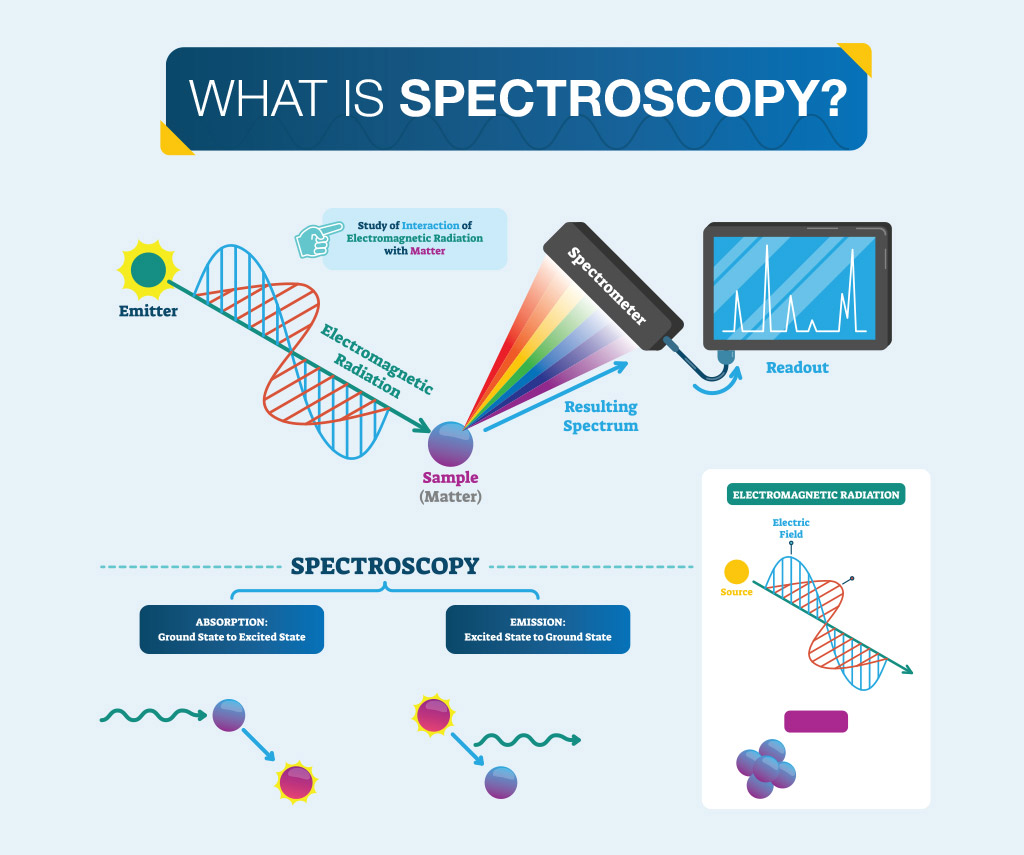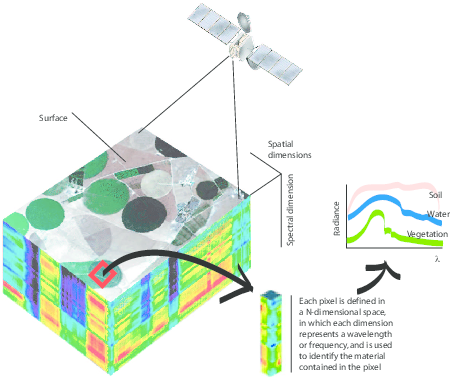Optical spectroscopy provides insight into the interaction between light and matter and is used in a wide range of applications. Spectroscopic approach has been used in the laboratory and in astronomy for more than 100 years. Traditionally, spectrometers served for a discrete measurement from a small sample within a cuvette.
Today spectroscopy uses laboratory/field spectroradiometers for measurements of spectral features (spectral curves) of various types of materials (laboratory spectroscopy) and wide range of sensors/cameras for the acquisition of images where for each spatial resolution element in the image a spectrum of the energy arriving at the sensor is measured (image spectroscopy).
Nowadays laboratory and image spectroscopy use advanced statistical, image processing and modelling techniques that enable to get not only qualitative but also quantitative information about the observed object and this way spectroscopy has become an indispensable powerful tool in the research, monitoring and preservation of multiple natural phenomenon on wide range of spatial and time scales. The applications of spectroscopic methods in the natural sciences are wide an interdisciplinary – they interconnect and include geographical, biological, geological or environmental disciplines.


